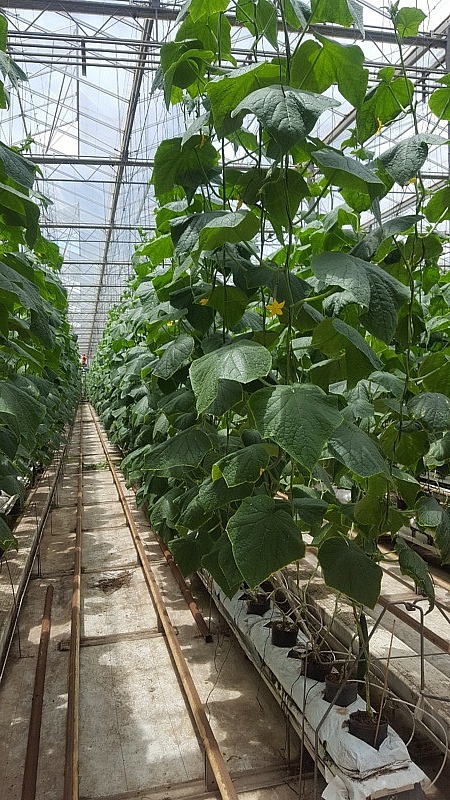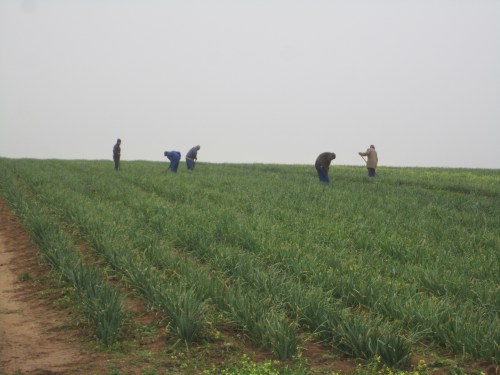Blockchain Will Not Fix Our Agriculture Value Chain.
If you have been reading this blog for some time, you know that I love farming. This morning before I sat down to write this post, I delivered 40kgs of onions to a client. Onions grown and harvested from my Meru farm, thanks to the help and labour of my parents. This is an ongoing story of my farming adventures which have often been tragically hilarious, and very expensive.
Whenever you talk to players both in and outside of the agriculture value chain, brokers are cited as the reason why farmers do not make much money from their work. At face value, it seems so. I mean, if the farm-gate price of tomatoes is 25 shillings per kg, and we are buying them for 150 shillings per kg at the supermarket, there must be obvious inefficiencies along the way, and if we fixed those inefficiencies, both the farmers and the consumers would be wealthier. This has been the promise of many tech companies that have come up recently.
“Let’s build an app so farmers can sell their produce directly to consumers.”
“Let’s use blockchain to link farmers to buyers.”
“We are using technology to cut out the middlemen, buying directly from farmers at a great price, and selling directly to the retailers (at a great price). Win-win!”
Ok great!
Why is it then that on the ground, farmer experiences are not reflective of these optimistic statements? Just this week, we sold a couple of tonnes of onions via a broker, at 5 shillings more than what one of these companies was offering farmers. Is 5 shillings a lot? Imagine that an acre of onion yields between 10,000 and 15,000 kgs of onions. 5 shillings is 50,000 shillings in potential profits. Upcountry, 50,000 shillings is a couple of months-worth of living expenses.
The onions story isn’t unique. If you talk to banana farmers, they share the same kind of experience – that the new companies come with great promises, but end up being just like brokers price-wise, but with higher quality demands.
So what is the problem with the agri value chain and how can we fix it?
1. Farmers are not producing enough, and we are not producing for the market.
This is the starting point.
Due to our unscientific farming methods, and other factors that are beyond a farmer’s control (poor weather, fake chemicals and fertilizers, lack of technical support etc), our farm yields are on average lower than optimal. For example, our 10-tonne yield was considered a good yield (for comparison, I once got 2 tonnes out of an acre), but the same seed grown scientifically can yield as much as 17 tonnes in an acre. We are literally leaving some of our profit in the soil.
The second problem with our production methods is the lack of uniformity in the produce. As per the grading standards, my onions had up to 3 sizes, with each size going to a different market segment. The very large sizes go to institutions, medium to the middle/ upper-income consumers, and the small ones go to the lower market segments. This is why the company that wanted to buy from us at 5 shillings less only wanted certain sizes because they only serve one of the three segments.
In a more developed agricultural system, I would be able to produce for only one market segment, which I would then either sell directly or to one buyer who has a direct link to the market.
2. Trading agri products is a low-margin business
For about one and a half years, I took a sabbatical from the corporate life, moved towns and farmed full time. During this time, I had the opportunity to interact with everyone in the supply chain; brokers, graders (yes, when you harvest tomatoes/onions/French beans etc, you also pay someone to grade them), loaders, off-loaders, the parking people at the market, security people, and so on and so forth.
For me, experience debunked the idea that brokers are taking all the money. The highly informal set up means nobody makes crazy margins from the process. There are at least 4 brokers between the farmer and the consumer, and a horde of other “entrepreneurs” who get paid for providing various services, and this is by design. For example I once took my tomatoes to the Githurai market, and was informed that my workers would not offload the boxes – there were designated offloaders whose going rate was 20 shillings per box. My bet is that after all expenses, brokers also make just a small percentage of the profits.
These two factors are why even tech/quasi-tech modern companies are struggling to pay their bills and pay farmers well.
- The business of trading in farm produce is a low-margin, high-risk business. To succeed, you need bare-bones operations, with low operating costs and lean staff numbers. This is a truth I constantly repeat to my day job clients who want to revolutionize farm produce marketing. If you get into it with corporate-type thinking, you will not make a difference – with time, you will find yourself undercutting even the brokers to keep the lights on in your expensive office.
- Given the same prices (or even a higher price from a formal buyer), farmers will always choose brokers over a formal buyer. Why? Because brokers buy everything. Farmers do not want to be left worrying about products that did not meet the grading requirement. They want to sell at once so they can pay bills and continue farming. Brokers have figured out a way to sell to all the market segments.
- The lack of trust between farmers and buyers is a big hindrance to the value chain’s development. See scientific farming demands capital, which can only be recouped through contract farming. Unfortunately, this has not worked very well, especially with small-scale farmers and the problem is on both sides. Farmers commit to a fixed price, but when prices go up (as they do seasonally), they sell to brokers. To mitigate against this risk, buyers on the other hand contract more farmers than they need, leading to situations where they cannot buy all the produce they committed to buy, disappointing the farmers, and the cycle continues.
- The structural problems in the value chain need to be fixed. It is tragic that we struggle with basics like fertilizer and chemicals. To make matters worse, technical support is a myth for most farmers. To attain our good yield at my farm, we had tremendous technical help from a neighbour who has been farming for close to a decade. My attempts to get professional help were not successful; our tax-paid agricultural extension officers are nowhere to be found, and when you do find them, their methods and ideas are outdated, because there is no link between their work, and that of private companies that are producing inputs that farmers use. To make things worse, the decline of our technical institutions has meant that students coming out of our agriculture courses have to learn from farmers because they are rich in theory, and poor in practicals.
- The government can do a lot more than giving farmers loans. Last year I visited a farm in Dube Park, a Special Economic Zone, where the government has set up and fully operates massive greenhouses that are then leased to contract farmers. After the visit, I posted a couple of tweets about Dube Park and how it would work for our context.<
On an aside, last year I visited the Dube Tradeport agrilab and greenhouses in Durban. A SEZ that includes agri. Things government money can do! https://t.co/R5uZkc7j8W
— Lady Tweetmouth (@RookieKE) February 17, 2018
/li>

The government caters for all the infrastructure (including water supply and purification) for this greenhouse. The farmer pays the lease and farms.




5 Comments